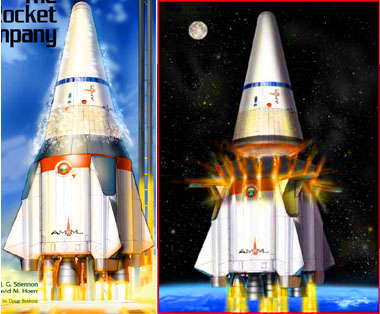Even more usefully, a scale of 424 km diameter reduces the surface area of the Earth from 510 million skm^2, to "only" 565,000 km^2. Thus, for roughly equivalent work the planet can have 1,000x the density of interesting stuff vs a real scale. 565,000 is still a huge map. As point of comparison Skyrim seem to be roughly 40 km^2. So, the earth would be 14,000 skyrim maps, as one world among many. This is not manageable as play areas.
However, its not quite that bad. First, we have land use: most land simply would have nothing interesting.

First you have 70% of the surface area is ocean, which as a space game should be nothing but scenery for plane or space travel, and to break up land areas. So, that already reduces it to 163,000 km^2 of land, or 5,641 local maps if each was roughly 5 km wide (so, roughly an hour to walk, or 3 minutes driving.
Of those, roughly 30% of that land is wastes of ice or deserts that there's not much reason to go on. That's territory the player really shouldn't be traversing with any regularity, and if they do its quite acceptable that there's nothing there. A player might fly to the south pole, but if you want to walk there, your going through semi-procedural areas that have nothing in it. The challenge of those kinds of terrain is in fact the nothingness there.
That's down to 114,000 km^2 of actual territory that needs to have something in it. Or about 4,000 local maps. Most of these should be procedural with 1-2 minor landmarks. By which I mean something like a hill, or large ball of yarn. So, of the 2,000 odd forest/wilderness maps, it would have its set forest biome, a notable local cliff, the programed forest road and river to connect to the other maps, and the rest is nearly purely procedural. Or maybe semi: the smaller the "biome" seed, the less effectively procedural it is.
However, its not quite that bad. First, we have land use: most land simply would have nothing interesting.

First you have 70% of the surface area is ocean, which as a space game should be nothing but scenery for plane or space travel, and to break up land areas. So, that already reduces it to 163,000 km^2 of land, or 5,641 local maps if each was roughly 5 km wide (so, roughly an hour to walk, or 3 minutes driving.
Of those, roughly 30% of that land is wastes of ice or deserts that there's not much reason to go on. That's territory the player really shouldn't be traversing with any regularity, and if they do its quite acceptable that there's nothing there. A player might fly to the south pole, but if you want to walk there, your going through semi-procedural areas that have nothing in it. The challenge of those kinds of terrain is in fact the nothingness there.
That's down to 114,000 km^2 of actual territory that needs to have something in it. Or about 4,000 local maps. Most of these should be procedural with 1-2 minor landmarks. By which I mean something like a hill, or large ball of yarn. So, of the 2,000 odd forest/wilderness maps, it would have its set forest biome, a notable local cliff, the programed forest road and river to connect to the other maps, and the rest is nearly purely procedural. Or maybe semi: the smaller the "biome" seed, the less effectively procedural it is.



